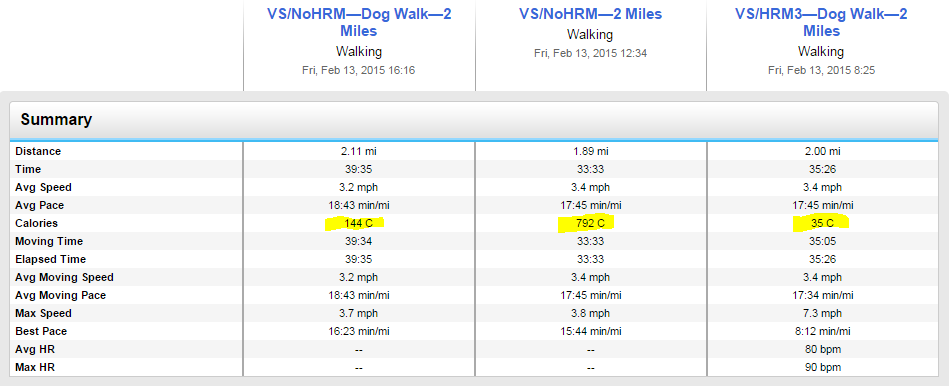Sorry if this has been brought up before but general search didn't bring anything up.
I have a vivosmart and premium heart rate monitor combo and I've notice a large fluctuation with calories burned with and without using the HRM. Now I would expect with the HRM it would reflect more since its getting more accurate info in form of heart rate but it's wildly different.
For instance I did a 30 minute walk the other day (without) and it registered it about 170 calories burned. A few web sites out there for walking would agree with their "web calculators". Tonight I did the same walk with the HRM and it said a whopping 312 calories. My heart rate was pretty consistent about 104. Not believing it i did some more general googling and found a few websites that agreed with it "generic what's your age, how long were you active and what was your average heart rate" calculations.
So the questions in as to what do I believe? I know calculators out there are generalized and all but that's a big difference. I don't want to use the HRM for everything if the count is too high but I also want credit for actual calories burned if it's right. If it was a 10% different I probably wouldn't even think twice but double the difference?
Thoughts?






